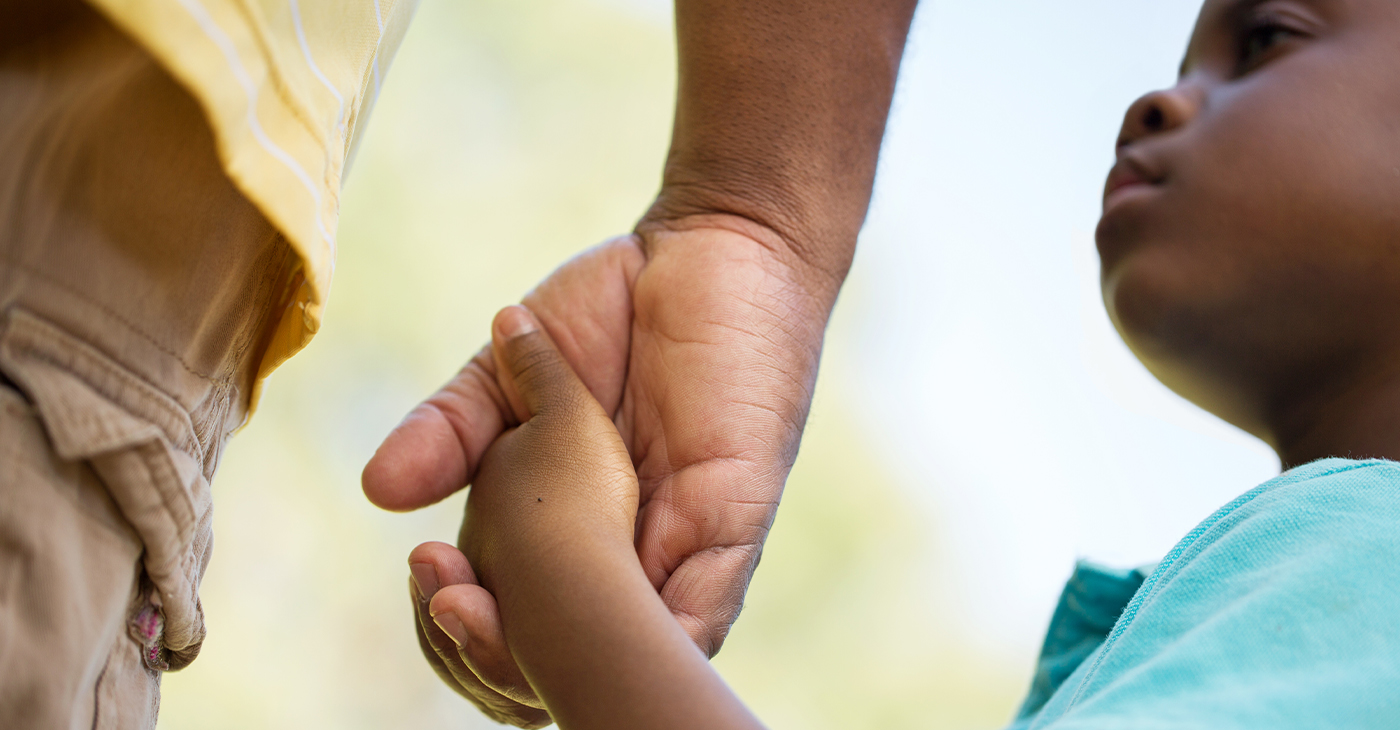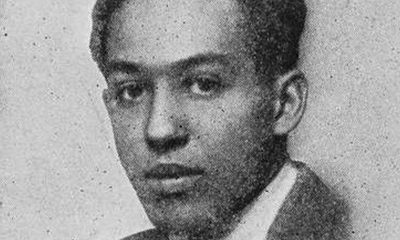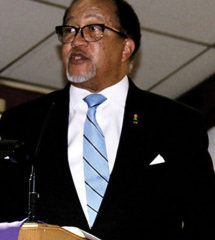Family
Autism spectrum disorder situation highlights need for early diagnosis
SOUTH FLORIDA TIMES — Shaniel Miles is a mother of three children, and now an expert and advocate – by necessity – on autism.
MIAMI, Fla. – Shaniel Miles is a mother of three children, and now an expert and advocate – by necessity ¬– on autism. Three years ago, when Shaniel took her then 5-year-old son Geremy for his check-up she was told he was just fine, even though he wasn’t speaking much. “He’ll catch up,” the doctor told her. “Boys are just slower.”
Later that year, Geremy entered kindergarten. His teachers never complained about him, but they also never let Shaniel know that Geremy still wasn’t speaking or socializing with classmates. At the end of the school year, Geremy was held back.
“I thought it was so that he could mature a little bit more,” Shaniel said. “He understood what was going on. We just thought he didn’t like to talk much.”
A year later Geremy entered first grade. When Shaniel asked about Geremy’s progress, teachers told her that although he was well behaved, he didn’t participate in classroom activities or do classwork. She called for a meeting with his teachers, the principal, the school counselor, and school psychologist so she could understand her son’s situation better. Together they all came up with a plan to monitor him more. But when newly implemented daily reports came home, Shaneil got the same news over and over:
Geremy wasn’t doing any classwork and he wouldn’t speak to the teacher. The teachers didn’t offer up any explanation or any solutions.
Today, “One in 62 African American children in the U.S. has an autism spectrum disorder and those children are frequently misdiagnosed or diagnosed later than other children, which may result in longer and more intensive intervention,” says Dr. Michael Alessandri, executive director of the University of Miami – Nova Southeastern University Center for Autism and Related Disabilities (UM-NSU CARD).
In Geremy’s case, he was 7 years old, Alessandri noted. “His speech delay and tendency to avoid eye contact with adults were early indicators of an autism spectrum disorder. Research shows early identification and family support have long-term benefits for children with autism. Unfortunately, Geremy’s story is all too common.”
When teachers told his mother they didn’t have time to work with him individually, she said, “I decided there wasn’t any more time left to waste with the school’s bureaucracy, and I made an appointment with a private psychologist.”
After the psychologist spent a few sessions with Geremy, and his parents, he was diagnosed with autism spectrum disorder (ASD).
“We were shocked and didn’t know what to think” said Miles. “But at the same time, we were relieved, because the psychologist confirmed what we had suspected. Geremy wasn’t progressing like the other children and he needed help. It took almost two and a half years, to figure it out. But we were determined to help our child and committed to doing what’s necessary to get him all the help he needs to get back on track,” Shaniel explained.
Autism spectrum disorder is a neurological condition that affects the way the brain develops and processes information. It is characterized by impaired social interactions, problems with verbal and nonverbal communication, and unusual, repetitive, or severely limited activities and interests. It is considered a “spectrum” disorder because it varies widely in its specific behaviors and severity from one person to another. Some individuals present with such mild symptoms that the disorder may go largely unnoticed by others.
“Parents, educators and medical professionals all need to be aware of the common and varied indicators of a possible autism spectrum disorder,” Alessandri said. Some of those include:
• Not responding to their name by 12 months,
• Not pointing at objects to show interest such as toys or airplanes by 14 months,
• Not playing “pretend” games, such as pretending to “feed” a doll by 18 months,
• Having trouble understanding other people’s feelings or talking about their own feelings
• Repeating words or phrases over and over (echolalia)
• Giving unrelated answers to questions
• Getting upset by minor changes
• Having obsessive interests
• Flapping their hands, rocking their body, or spinning in circles
• Having unusual reactions to the way things sound, smell, taste, look or feel.
“When any of these signs present themselves, it’s always best to speak to a medical professional, and if you’re not comfortable with what your family doctor or pediatrician is telling you, get a second opinion,” said Alessandri. “Symptoms can also vary by age and developmental level, with younger individuals often displaying different symptoms than older individuals. In all cases, individuals with ASD or other related conditions can benefit from early and appropriate treatment.”
UM-NSU CARD has offices in Broward, Miami-Dade and Monroe Counties and can help families get a thorough evaluation and proper diagnosis. From there clients can be provided primary services including information, resources, medical referrals and support groups. Additionally, the state-financed program provides training and workshops for parents and educators, as well as public education and awareness activities.
“We want to create a community and provide the information, support, and strategies that help individuals with autism and their families succeed in all stages of life,” Alessandri said.
“We wish we’d known about them earlier in the process. It would have saved us a lot of time and frustration,” said Miles. “But now were on the right track and we know what’s possible for our son.”
Today, 8-year old Geremy is in second grade and attends a public school in MiamiDade County that has a specialized program for students with ASD along with specially trained teachers who understand his needs and potential.
“He’s thriving and is on the honor roll,” Miles said. “We are very proud of him.”
This article originally appeared the South Florida Times.
Community
For Cervical Cancer Month, Medical Community Focused on Education
January was Cervical Cancer Awareness Month. Physicians, advocates and others in the medical community commemorated the month by raising awareness about a form of cancer they say is highly preventable and treatable. Cervical cancer is caused by a virus called the human papillomavirus (HPV) and it develops slowly over time but can be prevented with proper care in girls as young as 13 years old.

By Magaly Muñoz
January was Cervical Cancer Awareness Month.
Physicians, advocates and others in the medical community commemorated the month by raising awareness about a form of cancer they say is highly preventable and treatable.
Cervical cancer is caused by a virus called the human papillomavirus (HPV) and it develops slowly over time but can be prevented with proper care in girls as young as 13 years old.
Sonia Ordonez, an OBGYN and gynecology surgeon at Kaiser Permanente, stated that as soon as people with cervixes reach the maturity reproductive age, they should start taking preventative measures like getting the HPV vaccine. The vaccine involves a series of two-doses for people aged 9 through 14 or three-doses for people 15 through 45 years old.
“I see a lot of young women who can’t remember or may not have gotten [the vaccine] when they were younger, or maybe got one, but we can give them the series of vaccines and restart at any point in time,” Ordonez said.
She said that cervical cancer is not the only cancer caused by HPV. Strains of the virus can also lead to throat, anal and penile cancers.
Screening is also an effective way to check for cervical cancer and should be done every three years after someone turns 21, doctors recommend. It is best to start as early as possible to catch occurrences early.
Ordonez said that this cancer is also more likely found in people of color and has led to more deaths overall.
A Mayo Clinic article published last month stated that Black women are more likely to be diagnosed and die of cervical cancer, compared to White women in the U.S.
2,000 Black women are diagnosed every year with cervical cancer and 40% die as a result.
“This disparity is not due to genetic differences among White, Black or Hispanic women, but rather related to systemic racism, access to healthcare and socioeconomic factors,” Dr. Olivia Cardenas-Trowers, a Mayo Clinic urogynecologist, said in the article.
Ordonez stated that immigrant women are also highly susceptible to the cancer, as many Latin American countries may not have accessibility to screenings or lack of insurance makes it harder for them to get tested.
Hispanic women are 40% more likely to be diagnosed with cervical cancer, and 30% more likely to die from it, as compared to non-Hispanic White women, according to the Office of Minority Health.
Family medicine physician, Joy Anyanwu, stated that the pandemic contributed to hesitancy about getting cervical cancer screenings among some women. Other factors are people’s aversion to vaccines, parents not wanting to believe that their children are or will become sexually active, and doubt about the overall effectiveness of the vaccine.
“The vaccine is very safe — over 97% effective in preventing cervical cancer,” Anyanwu said. “Even if you aren’t having sex, the earlier you start would actually help.”
Anyanwu said she understands that parents might not want to ask questions about their children’s reproductive health, but it’s a mindset that can be a barrier to having important conversation about prevention or care.
To keep families their families and communties healthy, the doctor emphasized that people should prioritize keeping up with their vaccine series and going to screenings every year.
City Government
LAO Releases Report on Racial and Ethnic Disparities in California Child Welfare System
Racial inequalities in California’s child welfare system disproportionately impact poor Black and Native American children, according to a report released April 3 by the nonpartisan Legislative Analyst’s Office (LAO). The report, which was presented to the Assembly Subcommittee No. 2 on Human Services — chaired by Assemblymember Corey Jackson (D-Moreno Valley) — states that the proportion of low-income Black and Native American children in foster care is four times larger than other racial and ethnic groups in the state.

Racial inequalities in California’s child welfare system disproportionately impact poor Black and Native American children, according to a report released April 3 by the nonpartisan Legislative Analyst’s Office (LAO).
The report, which was presented to the Assembly Subcommittee No. 2 on Human Services — chaired by Assemblymember Corey Jackson (D-Moreno Valley) — states that the proportion of low-income Black and Native American children in foster care is four times larger than other racial and ethnic groups in the state. Half of the children from each racial group has experienced some level of child welfare involvement before reaching legal age.
Jackson is a member of the California Legislative Black Caucus.
“Racial and ethnic disproportionality and disparities are present within initial allegations and persist at all levels of the system — becoming the most pronounced for youth in care,” the report states.
The disparities have persisted over the last decade across the state, the LAO found, adding that Black children living in poverty are more likely to enter foster care. State data shows that there is a correlation between poverty and foster placement in each county.
“Throughout all levels of the child welfare system, families experiencing poverty are more likely to come to the attention of and be impacted by the child welfare system,” stated the report.
Overall, the report revealed that more than half of the families affected by the state child welfare system earn $1,000 per month, significantly less than the national average of $5,000 a month.
The financial disparities highlighted in the LAO report align with existing research indicating that poverty is among the main factors contributing to the likelihood of child maltreatment. State anti-poverty programs include cash aid, childcare subsidies, supportive housing, and nutrition assistance.
Activism
Hurlbut Benevolent Foundation Teams with RichmondWORKS to Feed Families
Over 300 families in Richmond received $100 food coupons during the holidays thanks to a partnership involving a local foundation and RichmondWORKS.

Richmond Standard
Over 300 families in Richmond received $100 food coupons during the holidays thanks to a partnership involving a local foundation and RichmondWORKS.
Richmond residents Maryn and Garry Hurlbut and the Hurlbut Benevolent Foundation (HBF) Board of Directors partnered with Bouakhay Phongboupha, program manager for RichmondWORKS, to make the distribution possible.
“Bouakhay and her staff have been able to identify some of the most needy families in Richmond who could make the best use of the supplemental food over the holiday season,” Garry Hurlbut said.
The Hurlbuts are retirees and Richmond residents who are very active in the community. One of the pair’s significant contributions is starting the Richmond Tennis Association, which significantly amplified tennis participation and facilities in the city.
-

 Activism4 weeks ago
Activism4 weeks agoOakland Post: Week of March 20 – 26, 2024
-

 #NNPA BlackPress3 weeks ago
#NNPA BlackPress3 weeks agoCOMMENTARY: D.C. Crime Bill Fails to Address Root Causes of Violence and Incarceration
-

 #NNPA BlackPress3 weeks ago
#NNPA BlackPress3 weeks agoMayor, City Council President React to May 31 Closing of Birmingham-Southern College
-

 #NNPA BlackPress4 weeks ago
#NNPA BlackPress4 weeks agoCOMMENTARY: Lady Day and The Lights!
-

 #NNPA BlackPress3 weeks ago
#NNPA BlackPress3 weeks agoFrom Raids to Revelations: The Dark Turn in Sean ‘Diddy’ Combs’ Saga
-

 #NNPA BlackPress3 weeks ago
#NNPA BlackPress3 weeks agoBaltimore Key Bridge Catastrophe: A City’s Heartbreak and a Nation’s Alarm
-

 Activism3 weeks ago
Activism3 weeks agoOakland Post: Week of March 27 – April 2, 2024
-

 #NNPA BlackPress3 weeks ago
#NNPA BlackPress3 weeks agoBaltimore’s Key Bridge Struck by Ship, Collapses into Water





















































1 Comment